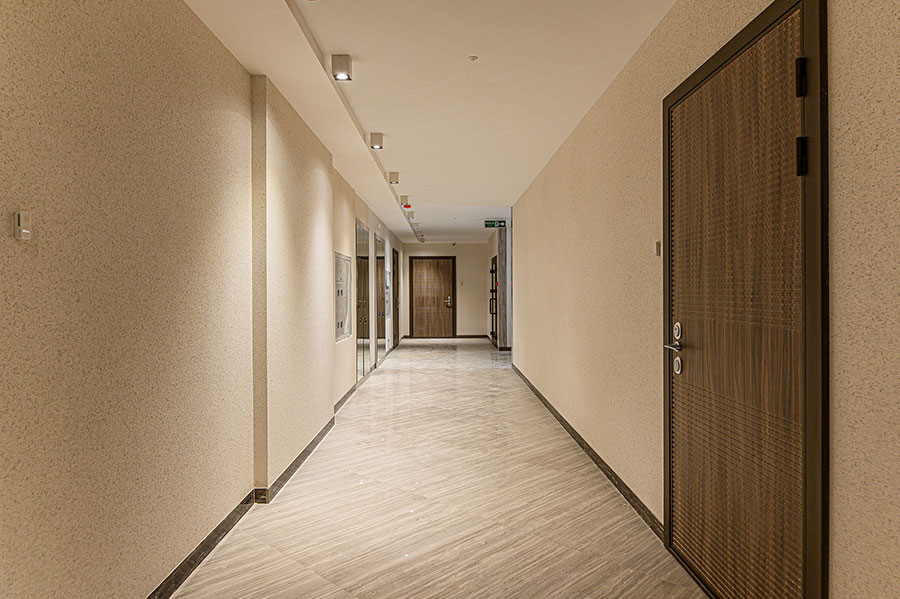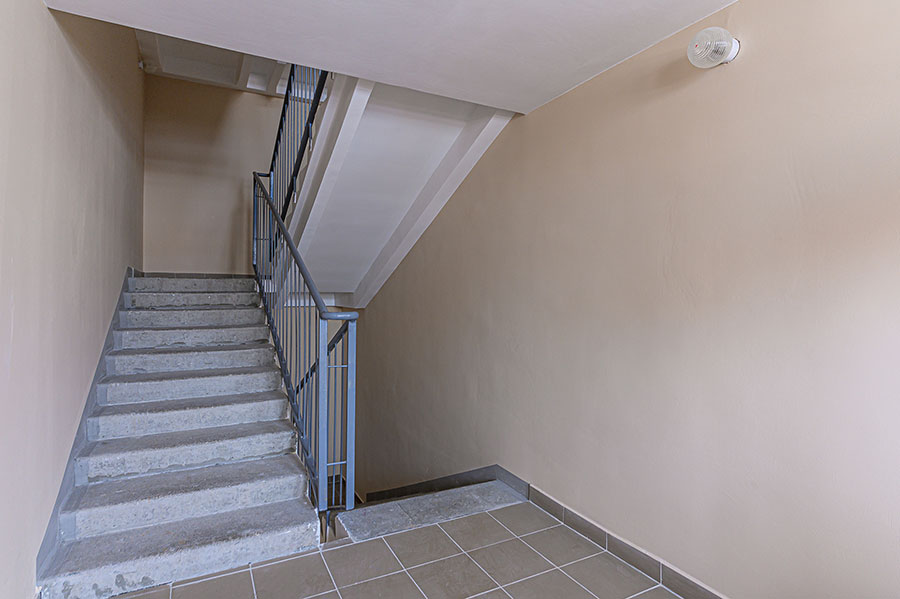
BS 7671: Chapter 42 - Protection against fire
With the introduction of the 15th Edition of the IEE Wiring Regulations in 1981 the UK aligned the requirements of the regulations with the International Electrotechnical Commission (IEC) worldwide electrical installation standard IEC 60364.
History
The IEC was formed in 1906 and the IEE/IET had been instrumental in its founding, it had been internationally recommended "that steps should be taken to secure the cooperation of the technical societies of the world by the appointment of a representative Commission to consider the question of standardization of the nomenclature and ratings of electrical apparatus and machinery".
Over the following years the work of the IEC has greatly expanded and it developed the production of international standards in many product and installation areas, and IEC documents have become the international standard that can be used for international standardization of products and installations or used by less developed countries to provide minimum safety requirements.
BS 7671:2018 requirements where particular fire risks exist
Chapter 42 of IEC 60364 deals with “Protection against thermal effects”. Initially in the 16th Edition of the Wiring Regulations this was a short chapter covering some basic requirements for protection against fire, burns and overheating. However, when the 17th Edition was published in 2008 the chapter was much enlarged and contained some specific requirements, and these were continued into the 18th Edition BS 7671:2018
Appendix 5 of BS 7671 also contains details of an IEC classification system for identifying “external influences” (factors which may affect the design and safe operation of an installation or a part of that installation) and provides some comments on characteristics that would be required in the selection and erection of equipment.
Extract from Appendix 5 of BS 7671:2018
Classification of external influences
Code A Environment B Utilization C Construction of buildings
| Code | External influences | Characteristics required for selection and erection of equipment |
| BD | Conditions of evacuation in an emergency | |
| BD1 | Low density / easy exit | Normal Low density occupation, easy conditions of evacuation Buildings of normal or low height used for habitation |
| BD2 | Low density / difficult exit | Low density occupation, difficult conditions of evacuation High-rise buildings |
| BD3 | High density / easy exit | High density occupation, easy conditions of evacuation Locations open to the public (theatres, cinemas, departments stores, etc.) |
| BD4 | High density / difficult exit | High density occupation, difficult conditions of evacuation High-rise buildings open to the public (hotels, hospitals, etc.) |
This Appendix is only informative and for guidance and is an “informative Appendix”. However, for convenience in drafting IEC documents over time the codes used in Appendix 5 have found their way into regulations.
Chapter 42 of Amendment 2 of BS 7671:2018 includes electrical provisions against the risk of fire in particular locations of increased fire risk such as wooden buildings, barns, industrial processes, or storage etc. The existing BS 7671:2018 Regulation section 422 “Precautions where particular risks of fire exist” has the following text in 422.1 and 422.2 regarding electrical installations and emergency escape:
422.1 General
The requirements of this regulation shall be applied in addition to those of Section 421 for installations in locations where any of the conditions of external influence described in Regulations 422.2 to 6 exist.
422.1.1 Except for wiring systems meeting the requirements of Regulation 422.3.5, electrical equipment shall be restricted to that necessary to the use of the locations given in Regulation 422.1.
422.1.2 Electrical equipment shall be so selected and erected that its normal temperature rise and foreseeable temperature rise during a fault cannot cause a fire. This shall be achieved by the construction of the equipment or by additional protective measures taken during erection.
Special measures are not necessary where the temperature of surfaces is unlikely to cause combustion of nearby substances.
422.1.3 A temperature cut-out device shall have manual reset only.
422.2 Conditions for evacuation in an emergency
The following regulations refer to conditions:
BD2: Low density occupation, difficult conditions of evacuation
BD3: High density occupation, easy conditions of evacuation
BD4: High density occupation, difficult conditions of evacuation.
(Refer to Appendix 5.)
NOTE: Authorities such as those responsible for building construction, public gatherings, fire prevention, hospitals, etc. may specify which BD condition is applicable.
422.2.1 Cables shall not encroach on escape routes unless they meet the recommended requirements of the
relevant part of BS EN 60332-3 series and achieve at least 60 % light transmittance when tested in accordance with BS EN 61034-2. Cables in escape routes shall be as short as practicable. Cables encroaching on escape routes shall not be installed within arm’s reach unless they are provided with protection against mechanical damage likely to occur during an evacuation.
Where used, cable management systems shall be one or more of the following types:
(i) conduit systems classified as non-flame propagating according to BS EN 61386
(ii) cable trunking systems and cable ducting systems classified as non-flame propagating according to BS EN 50085
(iii) cable tray and cable ladder systems classified as non-flame propagating according to BS EN 61537, or
(iv) powertrack systems meeting the requirements of BS EN 61534.
NOTE: Cables need to satisfy the requirements of the CPR in respect of their reaction to fire. See Appendix 2, item 17.
Cables that are supplying safety circuits shall have a resistance to fire rating of either the time authorized by regulations for building elements or British Standards for the circuits or one hour in the absence of such a regulation or standard.
422.2.2 In conditions BD2, BD3 or BD4, switchgear or controlgear shall be accessible only to authorized persons. If switchgear or controlgear is placed in an escape route, it shall be enclosed in a cabinet or an enclosure constructed of non-combustible or not readily combustible material.
These requirements do not apply to items of switchgear or controlgear installed to facilitate evacuation, such as fire alarm call points.
422.2.3 In escape routes where conditions BD3 or BD4 exist, the use of electrical equipment containing flammable liquids is not permitted.
This requirement does not apply to individual capacitors incorporated in equipment, such as a capacitor installed in a discharge luminaire or a motor starter.
Electrical installation designers and installers are generally not fire safety experts or fire engineers, and it is not for the electrical designer to decide what constitutes a fire risk and where “particular risks of fire exist”. All buildings in the UK are required to comply with the requirements of the relevant devolved nations statutory building regulations applicable to their location (specifically Part B of the Building Regulations in England and Wales).
The style of a building, and its requirements, functions and layouts are set out by an architect to the client’s requirements, (sometimes in conjunction with a fire safety engineer), and this includes structural fire safety and fire escape requirements.
To therefore identify building types and specify escape requirements by IEC codes in BS 7671 is not really helpful, especially as the terminology does not align with UK building regulations or construction industry requirements.
The decision has therefore been made to amend Chapter 42 so that it better reflects construction industry practice in regard to fire safety. As part of this amendment reference to BD classifications has been removed.
BS 7671:2018 + A2:2022 amended requirements
The national committee decided that more clarity was required, and that it was only necessary in BS 7671 to detail the buildings electrical requirements for installation designers and installers.
For this second amendment it was accepted that the fire safety design of a building and its electrical installation must be made (and the design requirements properly identified and specified) by the whole building design team, and records of the fire safety design provided in a formal fire safety manual, as required in fire safety legislation and guidance.
This is now a specific requirement, and it is for the designer of the electrical installation to only provide details of the basis of the electrical design and the materials specified for inclusion in the manual. The installer must then provide details of any changes or additions made during construction. The new text with these changes is shown below.
422.1 General
The requirements of this regulation shall be applied in addition to those of Section 421 for installations in locations where any of the conditions of external influence described in Regulations 422.2 to 422.6 exist.
For such locations the fire safety design of the building(s) should be documented. This information should be included in a fire safety manual produced by or for the person responsible for the building (the 'responsible person') as detailed in local and/or national fire safety legislation or guidance, including, for example BS 9999.
It is recommended that the electrical system designer/installer provides the person responsible for the building with details of the electrical system, setting out the basis of the design with respect to fire safety including routine maintenance requirements.
Where it is determined that cables should have an improved fire performance but are not covered by
Regulations 422.2 to 422.6, this may be achieved by using cables with a minimum light transmittance of 60 % when tested in accordance with BS EN 61034-2 and,
(i) limited flame propagation according to the minimum requirements of the relevant part of BS EN 60332-3 series or
(ii) where cable management systems according to 422.2.1 (iii) or (iv) are used, cables shall conform to the minimum requirements of BS EN 60332-1-2.
Regulations 422.1.1 to 422.1.3 not amended
422.2 Protected escape routes
Cables or other electrical equipment shall not be installed in a protected escape route unless part of:
(i) an essential fire safety or related safety system
(ii) general needs lighting
(iii) socket-outlets provided for cleaning or maintenance.
NOTE 1: Guidance is provided in Appendix 13.
NOTE 2: Generally, this means cables in a protected escape route should be limited to lighting and associated accessories, emergency lighting and fire detection and alarm systems, although cables for other safety systems may be necessary.
Hospitals may have special requirements as detailed in Section 710.
422.2.1 Only cables that meet the following requirements shall be installed in protected escape routes:
(i) cables meeting the requirements of 560.8.1 or cables with resistance to flame propagation according to the recommended requirements of the relevant part of BS EN 60332-3 series or, where cable management systems according to (iii) or (iv) below are used, to the recommended requirements of BS EN 60332-1-2
and
(ii) a minimum of 60 % light transmittance when tested in accordance with BS EN 61034-2. Cables in protected escape routes shall be as short as practicable. Cables encroaching on escape routes shall not be installed within arm’s reach unless they are provided with protection against mechanical damage likely to occur during an evacuation. Where used in protected escape routes, cable management systems shall be one or more of the following types and shall be of limited smoke production so as not to inhibit escape:
(iii) conduit systems classified as non-flame propagating according to BS EN 61386
(iv) cable trunking systems and cable ducting systems classified as non-flame propagating according to BS EN 50085
(v) cable tray and cable ladder systems classified as non-flame propagating according to BS EN 61537
(vi) powertrack systems meeting the requirements of BS EN 61534.
NOTE 1: Non-fire resisting cables need to satisfy the requirements of the CPR in respect of their reaction to fire.
See Appendix 2, item 17. There are no requirements in the CPR for fire resisting cables described in Regulation 560.8.
NOTE 2: Ferrous metal, e.g. steel, is deemed to be an example of a material having limited smoke production.
Cables that are supplying safety circuits shall have a resistance to fire rating of either the time authorized by regulations for building elements or British Standards for the circuits or one hour in the absence of such a regulation or standard. Refer to Regulation 560.8 for such cables.
422.2.2 Switchgear or controlgear shall be accessible only to authorized persons. If switchgear or controlgear is placed in an escape route, it shall be enclosed in a cabinet or an enclosure constructed of non-combustible or not readily combustible material.
These requirements do not apply to items of switchgear or controlgear installed to facilitate evacuation, such as fire alarm call points.
422.2.3 In protected escape routes the use of electrical equipment containing flammable liquids is not permitted.
This requirement does not apply to individual capacitors incorporated in equipment, such as a capacitor installed in a discharge luminaire or a motor starter.
Escape routes
Amendment 2 has introduced specific requirements for “Protected escape routes” in buildings.
There has always been a provision in building regulations and in alternative guidance for existing buildings regulated under the Regulatory Reform (Fire Safety) Order (Or equivalent legislation in Scotland and Northern Ireland) for alternative and safe escape from a building in an emergency, and the requirement for this escape provision to provide safety to those escaping whilst doing so.
The idea of escape routes is well understood, but in larger or multi-storey buildings the length of escape route and the time taken for persons to escape is increased and may put those escaping in danger before they can exit the building.
There are no specific requirements for fire protection in local escape routes, but the building regulations and safety guidance (e.g. BS 9999) places limits on their length and the distance of travel, so in larger or multi-storey buildings the local escape routes connect to “protected escape routes”.
A protected escape route is designed to be of fire-resistant construction for a specified time and must not contain any services except those specifically required for escape and safety e.g. lighting, fire alarms etc.
Such services must have minimum specified fire resistance performance as listed in Regulation 422.2. The new Appendix 13 in BS 7671 gives further guidance about what is and what is not allowed in protected escape routes.
Figure 1: Hotel general escape route

An example of this arrangement would be a typical hotel with the corridor having rooms off it along both sides with the room doors being fire doors.
The corridor is an escape route which leads to escape stairs at certain distances along the corridor, and usually stairwells at the ends of the corridor.
These stairwells are usually drab unfinished concrete walls and stairs with steel handrails hence they are a protected escape route with fire-resistant construction.
Figure 2: Protected escape stairs route

Conclusions
Although the requirements in Chapter 42 of BS 7671:2018+A2:2022 are stated as being for particular locations of increased fire risk, the building regulations requirements for fire safety design and the provision of suitable escape routes apply everywhere in new buildings and for the extension, refurbishment or change of use of existing buildings.
The electrical designer or installer are not typically fire experts and must not be expected to identify or specify fire safety provisions in buildings.
What they should do, however, is in association with the members of the design team identify the protected escape routes within a building and ensure that the electrical installation meets the requirements of Section 422 and does not undermine the safety of these routes by following the new rules for protected escape routes in BS 7671.
Acknowledgements
I would like to thank Frank Smith of BSi committee FSH/014 “Fire precautions in buildings” and the Nuclear Industry Fire Safety Co-ordinating Committee for their input to the development of this amendment to BS 7671.
